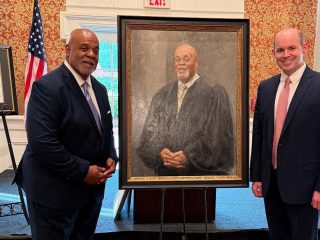
Explainer: What municipal budgets pay for, how they’re funded

Each spring, several things happen with clockwork predictability — plants burst into leaf, the weather turns warmer and municipal-budget season begins.
While the process of developing a municipal budget may seem to some as mysterious as how daffodils know when to emerge, it’s relatively straightforward. Counties, cities and towns go through a broadly similar process, regardless of size.
Municipal services
Municipalities do a lot of things people tend to take for granted.
There are the basics, such as public safety in the form of police and fire protection, or public works in the form of solid waste collection and maintaining infrastructure such as streets and sidewalks.
But in recent decades, developing and maintaining recreational amenities like parks, trails and other public gathering spaces has played an increasingly important role in meeting expectations about how communities look and overall quality of life.
Greenville County’s smaller municipalities — Greer, Fountain Inn, Mauldin, Simpsonville and Travelers Rest — also contend with the population growth that has characterized the Upstate, and South Carolina in general, in recent years.
Growth has placed more demands on city services, which translates into more expenses, which requires larger budgets.
According to the city administrators of Greer, Fountain Inn, Mauldin and Simpsonville, preparing the annual budget is a balance between paying for all the services residents rely on against available revenue sources. The tax rates and fee structures that fund city governments — and the policy priorities that direct how that revenue will be spent — are set by a city’s elected leaders, primarily in the form of a mayor and City Council.
 Executing those priorities and ensuring taxpayer dollars are spent wisely falls to the professional staff who administer city government and provide the services taxpayers rely on. As Mauldin City Administrator Seth Duncan explained, city personnel are often neighbors to the public they serve.
Executing those priorities and ensuring taxpayer dollars are spent wisely falls to the professional staff who administer city government and provide the services taxpayers rely on. As Mauldin City Administrator Seth Duncan explained, city personnel are often neighbors to the public they serve.
“I’m not some faceless bureaucrat in Washington,” Duncan said. “I’m Seth who lives down the street.”
This is important to remember as the bulk of municipal spending is devoted to personnel. A significant portion of that is devoted to public safety, according to Simpsonville City Administrator Dianna Gracely.
Police and fire protection are among the most basic and essential services city governments provide to their citizens. Providing competitive compensation and benefits for those employees is vital to recruiting and retaining public safety professionals, she said.
“A large portion of our annual budget funds the city’s growing and dynamic workforce,” said Andy Merriman, Greer city administrator. “We don’t produce widgets. We serve people, and it takes people to serve people.”
Municipal revenue
The bedrock source of revenue for municipal governments is ad valorem property taxes assessed on things like homes and commercial property.
The millage assessed by cities generates one of the most predictable sources of revenue municipalities use to fund day-to-day operations and typically accounts for a significant portion of general fund revenues.
But comparing millage rates among cities is not always an apples-to-apples comparison. It accounts for only one type of revenue a city depends on to pay for all the services a city provides its residents. Cities also assess fees for things like building permits and business licenses, and collect franchise and license fees from service providers such as telecommunications companies that operate within a city.
For example, Greer’s millage rate of 113 mills generated about half the revenue of the $51.6 million in general fund budget for the 2024-2025 fiscal year. Revenue from franchise fees, licenses and permits generated another $15 million in general fund revenue.
Expenses related to personnel accounted for $33.4 million of the total general fund budget.
Greer’s employees are spread across departments responsible for police and fire protection; parks, athletic programs and public recreation facilities; sanitation services; street and sidewalk maintenance; disaster response; community planning; establishment and enforcement of development and codes ordinances; and executing smart growth initiatives adopted by the mayor and council.
 Rising costs
Rising costs
Growth and the increased demand it places on city services has put significant pressure on municipal leaders to increase spending. In some cases, this has led to millage increases raising property taxes and higher fees for licenses and other municipal services.
“Ideally, growth should pay for growth, but it’s not immediate,” said Shawn Bell, Fountain Inn city administrator.
Like his fellow city administrators across the county, Bell has to contend with the reality that it can be one or more years before property taxes from new developments generate additional revenue. Because new people and businesses coming into a city generate immediate demand for services, municipalities have had to consider other methods of generating revenue to help meet increased demand.
Development impact fees, which have been adopted by Greer and are in the process of being adopted by Fountain Inn, assess a fee on all new construction to help fund capital improvements necessary to meet new demand associated with growth.
By state law, impact fee revenue can only be spent on capital projects previously identified in a city’s capital improvement plan. While impact fees can help a city government cope with growth, they’re “not a silver bullet,” Bell said.
The value of city living
In a very real sense, municipal taxes are a premium residents pay to live in a community that has more to offer, both in terms of services and amenities — like shops, restaurants, parks and community gatherings — than can be found in a rural setting.
With higher taxes come higher expectations from taxpayers.
Recreational “third spaces” for people to gather away from home or work have become an increasing priority for city residents, Gracely said.
“Those are the types of things you never used to hear about municipalities being involved in,” she said.
Such spaces — such as Greer’s City Park, Simpsonville’s CCNB Amphitheatre at Heritage Park and Mauldin’s Ray W. Hopkins Mauldin Senior Center — support residents’ quality of life and contribute significantly to each city’s unique sense of place.
But, like police and fire protection, those amenities cost money.
Duncan said one of the most important jobs administrators like him undertake is being open and transparent with taxpayers about where their tax dollars are being spent. He added residents generally understand the value of the services their cities provide and are willing to bear the higher taxes maintaining those services sometimes requires.
“Nobody wants to pay more in taxes,” he said. “(But) people are willing to accept small, incremental changes over time.”

How property taxes are determined
Taxes on real estate generate the lion’s share of property tax revenue for local governments, and Section 1, Article X of the state constitution defines the ratios at which different types of property are assessed. For example:
- 4% for owner-occupied homes
- 6% for commercial property and nonprimary residences
The assessment ratio determines how much of a property’s assessed value is subject to property taxes each year. The property tax millage rate is used in conjunction with the assessment ratio and a property’s assessed value to then determine the tax owed.
To determine a property’s tax liability, multiply the property’s assessed value by the assessment ratio for that property type. Multiply that result by the millage rate.
For example, Simpsonville’s millage rate is 59.8 mills. Using this rate for a commercial property valued at $100,000, for example, would produce a property tax bill like this:
- $100,000 x 6% = $6,000
- $6,000 x .0598 = $358.80
Municipal budgets, millage rates by the numbers (FY 2024-2025)
Fountain Inn
- Total budget: $33.44 million
- Millage rate: 68.7
- Property tax revenue: $4.89 million
Greer
- Total budget: $51.65 million
- Millage rate: 113.0 mills
- Property tax revenue: $27.22 million
Mauldin
- Total budget: $38.36 million
- Millage rate: 59.9 mills
- Property tax revenue: $10.07 million
Simpsonville
- Total budget: $24.58 million
- Millage rate: 59.8 mills
- Property tax revenue: $8.45 million
Travelers Rest
- Total budget: $8.07 million
- Millage rate: 88.9 mills
- Property tax revenue: $3.65 million
The post Explainer: What municipal budgets pay for, how they’re funded appeared first on GREENVILLE JOURNAL.
























